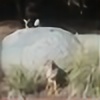HOME | DD
 Dragonthunders — TFiF: Emperor Cirristellus
Dragonthunders — TFiF: Emperor Cirristellus

Published: 2016-09-22 19:03:43 +0000 UTC; Views: 15786; Favourites: 203; Downloads: 39
Redirect to original
Description
Up:The tardiavids of the genus Pinnanectus became in the only cosmopolitan kind of marine tetrapod species during the period Erithohelion, being a predator of small animals, of course, they are not a nuisance and less a threat to some of the giants nektonic monsters as the Emperor Cirristellus, which it has proliferated in the last days of this period.
Below: approach to the body and compared to a human.
For arthropods, the question of size has always been in many ways a huge advantage or disadvantage for survival, being for small and fast enough to evolve and adapt to any conditions they may face, but when grow it becomes complicate. With a lack of an endoskeleton, in many groups a poorly circulatory system capable of distributing the oxygen in its body, a terrible mobility (this affect most on land forms), and with vertebrates mostly present as the dominant animals, have been limiting factors to grow. Since the Paleozoic times, are almost counted the arthropod species that have exceeded a length superior that a couple of decimeters and most of these always belong to the crustaceans. In the era of human some of the notable examples were the crabs deep with wingspans of up to 4 meters and land forms the heavier forms of all arthropods be considered at the time, similar to those of a cat lengths. Of course, this did not end there. Over the next million years other varieties of arthropods began to develop maximum sizes, some with the advantage of neoteny, others by simple lack of competitors.
The big moment came for these ancient conquerors after 660 million years, the earth passed by one of the most transforming event that have suffered: the end of the Phanerozoic. This led to the almost total extinction of many clades and an evolutionary stagnation which lasted tens of millions of years. The first animals to recover quickly were of course, invertebrates, especially arthropod. In the late Erithohelion (730 m.y.), most of the biggest animals around aren’t the vertebrates, but invertebrates, especially in the oceans. With most chordates relatively outside the great scheme of the ecosystem, this time (and much of the next period, the Ostracogene) has allowed the proliferation of new and great forms of boneless animals, and among them, are the arthropods. Crustaceans stand of course in this landscape, like copepods that reach lengths of one meter, isopods as long as men, and unusual filter feeders, descendants of an unexpected type of sessile forms, the barnacles.
These derived forms differ from the first by a huge change in their lifestyle as they left the sessile forms and turned into free swimmers. Known as Cirripteryds, these proliferated in the last periods of the Phinizoic era, adopting styles similar to ophidian, using their modified arms to mobilize. They were one of the few lineages in being able to survive the mass extinction of the Phanerozoic, and with many vacant niches, were able to expand and grow. And here it is where comes probably the greatest achievement that has reached the arthropods in terms of length and span.
The Emperor Cirristellus (Brachiplumea gigantiforma) is probably one of the largest species of arthropod ever, a huge Cirripteryd with a leg span of about 10 to 15 m, all connected to a body that is miniscule in comparison, of just about 80 cm. This species achieved this enormous length due to the lack of predators or competitors that might threaten and the large amounts of plankton that has proliferated in the last million years. This species live in the open ocean, always at the mercy of ocean currents, especially near the tropics in summer times and mobilizing towards the equator in winter, depending on which hemisphere are located. Its long arms fulfill two essential functions: collection and transportation of food. During swimming, tend to coordinate a group of arms to push while the other group is raised to a position and repeat the same process. When are feeding this captures all the plankton that can take between its massive arms and then roll up the arm to the center of the body, where with a group of specialized limbs, collect and carry the captured plankton into the mouth. The body is protected by several calcareous plates that cover much of its body, with small slits which project small eyes, and a huge ridge which used as keel. Its life cycle is not so different from its ancestors, except that not become completely sessile when they become it adults. Normally it takes like 10 years to reach the maximum length, and get to have a life expectancy of up to 150 years.
It has certainly been a big path after hundreds of million years but is the first time that the arthropods exceeded the limits, but for shame, this will be useless to what is coming.
With the world changing drastically, and both vertebrates and others invertebrates coming to rule the planet again, these magnificent filter feeders of the Erithohelion are doomed to extinction. Its smaller relative will have a way to meet these challenges, however, will not return to develop these lengths, as any other.
Arthropods will never be as big as this again.
Related content
Comments: 40

That's really cool! I can only imagine the amount of sheer existential terror I would experience if I were swimming with one, even if it's just a filter feeder.
👍: 0 ⏩: 1

Very outside-the-box way of creating a giant arthropod. I wish I had thought of that!
👍: 0 ⏩: 1

ABOSULUTELY STUNNING!
question, how many limbs does this thing have
👍: 0 ⏩: 1

Thanks
5 pairs modified to filter feeding, and 2 small pairs
👍: 0 ⏩: 1

so in total they have 14 limbs, am I right?
👍: 0 ⏩: 0

How do they reproduce? Do they just mate whenever they meet?
👍: 0 ⏩: 1

Still unknow, I need to work on it.
👍: 0 ⏩: 1

Maybe they all meet up at a certain time of year to spawn? I think there are modern barnacles that can broadcast spawn. Or they could all meet up and mate like normal barnacles (I'd guess they'd have much smaller penis-to-arm ratios given their mobility)
Since they're mobile, they don't automatically need to be hermaphroditic - it'd be fun to have larger females and smaller, faster males that run round mating with as many females as possible.
They don't look like the sort of animal that would fight over mates
👍: 0 ⏩: 0

It was largely the inspiration
👍: 0 ⏩: 0

I know you said this thing is peaceful, but good god, if I ever saw that in front of me I would freak out.
👍: 0 ⏩: 1

Quite weird how evolution can completely warp things.
👍: 0 ⏩: 1

Yeah, but it is peaceful and friendly
👍: 0 ⏩: 1






























